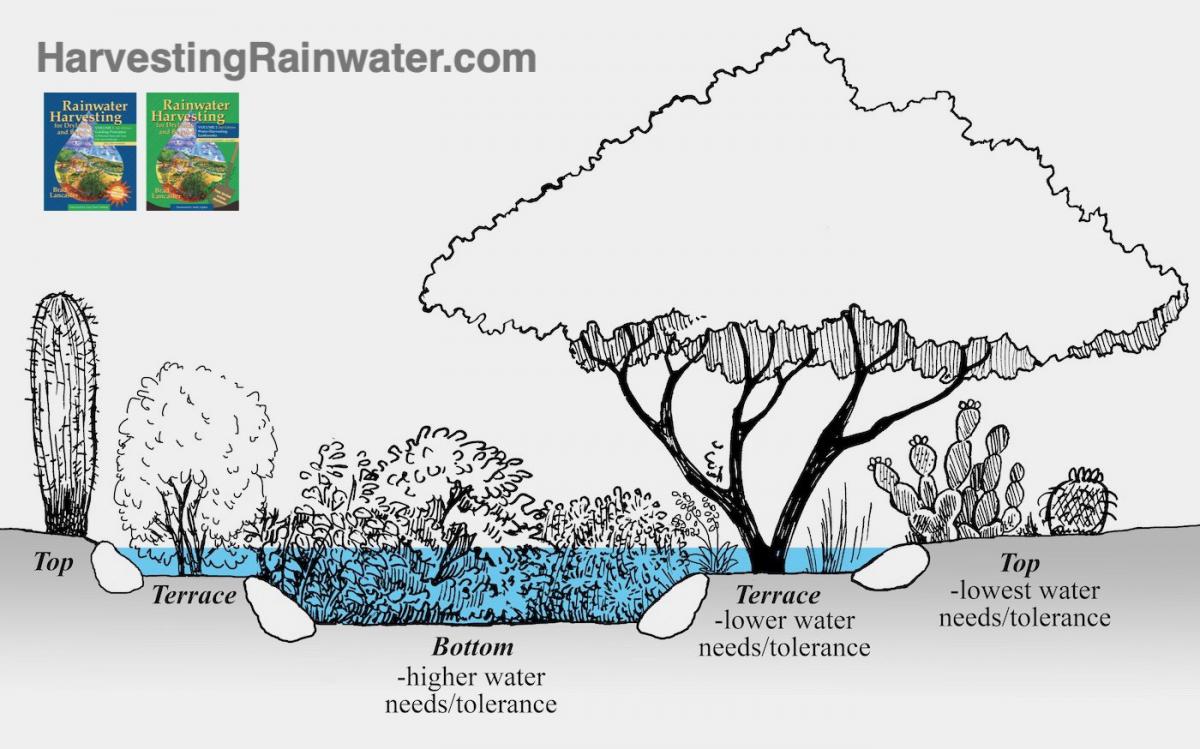Family: Asteraceae
Common Names:
- English: brittlebush
- Spanish: rama blanca
- O'odham: Tohaws
Scientific Name: Encelia farinosa
Rain Garden Zone: E. farinosa thrives in the terrace Rain Garden Zone but can also fare well on the top.

Reproduced with permission from "Rainwater Harvesting for Drylands and Beyond" by Brad Lancaster, HarvestingRainwater.com
Flowering Season: Spring
Characteristics: E. farinosa is a small evergreen that can grow up to 5 ft in height, with a
rounded, spreading form (1). Stems contain a fragrant resin (2). Leaves are ovately shaped,
gray-green in color and fuzzy in texture (1). Flowers are bright yellow (2).
Landscape Cultivation: The shrub is considered low water use, semi frost hardy (down to 28 oF)
and moderately salt tolerant; it is commonly found growing on rocky slopes, along washes, and
on desert flats with full sun exposure (1).
Ethnobotany:
Wildlife: Flowers attract pollinators such as butterflies, small bees, and moths, and seeds are
eaten by sparrows (1).
Medicine: The Cahuilla people use the blossoms, leaves and stems of the shrub to create a
decoction used to treat toothaches (3).
Other: Resin harvested from the stems can be used as glue, pottery sealant, and violin rosin (4).
References:
1. UA Campus Arboretum
2. Lady Bird Johnson Wildflower Center
3. Bean, Lowell John and Katherine Siva Saubel. (1972). Temalpakh: Cahuilla Indian
Knowledge and Usage of Plants. Malki Museum Press.
4. Felger, Richard Stephen, and Mary Beck Moser. (1985). People of the Desert and Sea:
Ethnobotany of the Seri Indians. University of Arizona Press.
To learn more about this species, see the Campus Arboretum species description page.

